#Uria aalge
Photo

Common Guillemot
5K notes
·
View notes
Text
Auks in the harbour

View On WordPress
0 notes
Text
Most such helpers are nonbreeders; others have tried but failed to breed, while some have finished raising their family or are also taking care of their own chick.
"Biological Exuberance: Animal Homosexuality and Natural Diversity" - Bruce Bagemihl
#book quote#biological exuberance#bruce bagemihl#nonfiction#helper#babysitter#common murre#guillemot#uria aalge
0 notes
Text
Although it is difficult to draw firm conclusions without detailed study of individual birds, most males that engage in homosexual behavior in these species are probably functionally bisexual, since they are usually already paired with a female (although a few Common Murres who participate in such activity may be unpaired).
"Biological Exuberance: Animal Homosexuality and Natural Diversity" - Bruce Bagemihl
#book quote#biological exuberance#bruce bagemihl#nonfiction#bisexual#drawing conclusions#common murre#guillemot#uria aalge#laysan albatross#diomedea immutabilis
0 notes
Photo
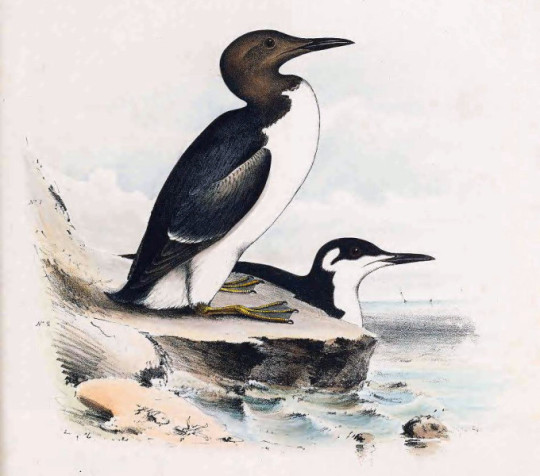
A new variant has been added!
Common Murre (Uria aalge)
© H. L. Meyer
It hatches from black, brownish, common, crisp, curved, dark, difficult, loose, messy, rocky, similar, single, slender, small, thick, and white eggs.
squawkoverflow - the ultimate bird collecting game
🥚 hatch ❤️ collect 🤝 connect
0 notes
Text

[2616/11080] Common murre - Uria aalge
Also known as: common guillemot
Order: Charadriiformes
Suborder: Lari
Family: Alcidae (auks)
Photo credit: Eamon Riordan-Short via Macaulay Library
112 notes
·
View notes
Text
Day 2


Bird watching boat trip at Vestmanna
youtube
Birds I saw:
Black guillemot (Cepphus grylle)
Common guillemot (Uria aalge)
Atlantic puffin (Fratercula arctica)
Razorbill (Alca torda)
Northern fulmar (Fulmarus glacialis)
Arctic tern (Sterna paradisaea)
Great black-backed gull (Larus marinus)
European herring gull (Larus argentatus)
Lesser black-backed gull (Larus fuscus)

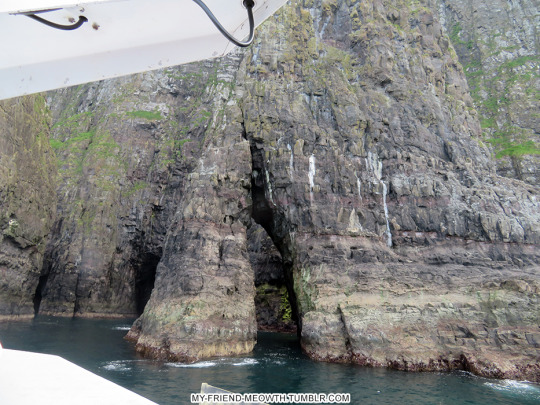



I will post more bird pictures to Instagram @ stalkkeriwolf
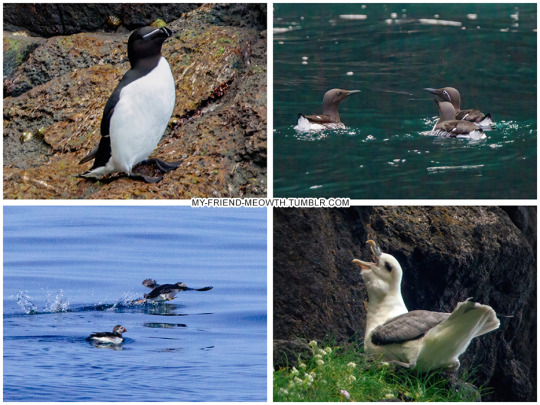
10 notes
·
View notes
Photo

Common Murre (Uria aalge)
© Paul Waton
32 notes
·
View notes
Text

Common Murre
19 notes
·
View notes
Photo

Study suggests cause of Pacific Ocean seabird deaths in 2015 - Los Angeles Times
Common murres are the masters of their universe. One of the best adapted seabirds in the northern hemisphere, they can outfly other seabirds and speed from shelf to coast in a few hours. Underwater, they’re agile enough to catch fast-moving prey and strong enough to dive the depths of two football fields. If the fish move, they can move, too.
Yet half a million to 1.2 million common murres starved to death during the 2014 to 2016 marine heatwave — about 10% to 20% of the population, said John Piatt, wildlife biologist at the U.S. Geological Survey in Anchorage and the corresponding author on the study. On a stretch of beach more than a half-mile long in Prince William Sound of Alaska, their carcasses numbered in the thousands.
Melanie Smith, a director based in Alaska for the National Audubon Society’s Migratory Bird Initiative, who was not affiliated with the study, recalls seeing murres as far inland as Fairbanks.
“The murres were so desperate for food, they were going to places they never go and had never been seen before,” Smith said. “They’re squarely an ocean species and don’t belong in freshwater environments at all. It was a clear sign something was wrong.”
Reproductive rates in murre colonies from California to the Bering Sea also plummeted alarmingly. Colonies that had been stable for decades stopped laying eggs. From 2015 to 2017, 22 murre colonies from California to the Bering Sea didn’t produce a single chick. In all his years studying the birds, Piatt said he could count on one hand the number of colonies that had failed before 2015.
“These birds are so productive and efficient,” Piatt said. “This just doesn’t happen.”
Altogether, the die-offs spanned three marine ecosystems over 3,700 miles of coast and lasted up to nine months in the Gulf of Alaska, where the murres were hardest hit.
“Did that get my attention? Yeah, you bet,” said Piatt, who has been studying murres since the 1970s. “This level of mortality and over this range is just mind blowing.”
Piatt suspected there was more to their plight than the redistribution of poorer quality prey, given the murres’ superlative ability of finding food across the lengths and depths of the continental shelf.
Piatt and his colleagues looked again at the food supply, but through a different lens. Researchers studying models of predator fish — including Pacific cod, arrowtooth flounder and walleye pollock that compete with the common murre for food — projected that a 36-degree (Fahrenheit) increase in water temperatures would have jacked up fish appetites by 34% to 70%.
Give that predator fish already out-consume seabirds 10- to 100-fold under normal conditions, they would have completely decimated the food supply during the Blob. Sure enough, while dead murres were washing ashore in droves, adult Pacific cod populations in the Gulf of Alaska were “silently crashing” below the surface, Piatt said.
So the murres were hit with a double whammy, which exploited one of their few vulnerabilities — their high metabolism. The small seabird, which weighs about 2 pounds, must eat 56% of its body mass each day to survive — a daily diet of about 60 to 120 high-fat forage fish, including sardines, herring and capelin. Without food, murres starve to death within three to five days. Many of the dead or dying murres that washed ashore had empty stomachs and little to no body fat or muscle.
#Common Murre#Uria aalge#Uria#Alcidae#Lari#Charadriiformes#Aves#birds#seabirds#murre#climate change#marine life#Pacific Ocean#Alaska
174 notes
·
View notes
Text
About 10 percent of all Common Murre matings are forced copulations been a male and a female other than his partner, and on some days each female is subjected to such a rape attempt nearly every hour.
"Biological Exuberance: Animal Homosexuality and Natural Diversity" - Bruce Bagemihl
0 notes
Text
Common Murres and Laysan Albatrosses spend eight to nine months of the year at sea (often in large flocks for Murres).

"Biological Exuberance: Animal Homosexuality and Natural Diversity" - Bruce Bagemihl
#book quotes#biological exuberance#bruce bagemihl#nonfiction#common murre#guillemot#uria aalge#laysan albatross#diomedea immutabilis#out at sea
0 notes
Text
🌟 Welcome to the world, little floof! 🌟

We're proud to announce that a new common murre chick hatched behind the scenes at the Aquarium on August 11 as part of a species survival plan to help wild murres.

Aimee Greenebaum, curator of aviculture at the Aquarium, said the chick is doing well behind the scenes and is very vocal. During an exam on Wednesday, the little one weighed in at 165 grams—almost 100 grams more than its hatch weight of 67 grams just ten days earlier—a sign that it’s eating and growing like a champ!
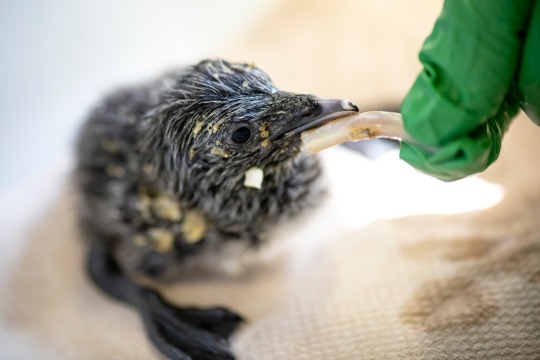

The chick, whose sex is still unknown, will spend about two months behind the scenes learning how to be a murre and growing into its feet before joining the rest of our colony on exhibit. Stay tuned for murre updates!

#monterey bay aquarium#Uria aalge#common murre#OH. MURRE. GOODNESS!#the smolest birb#it's like a little puppy that hasn't grown into its big paws yet#😭❤️
699 notes
·
View notes
Photo
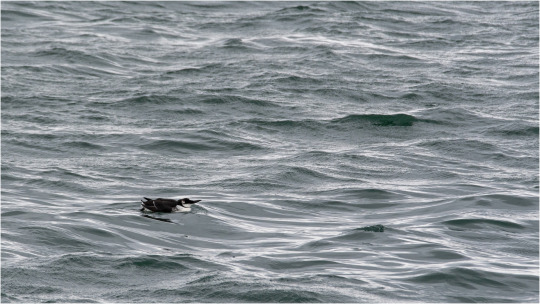
Lomvie (Uria aalge)
Common Guillemot (Uria aalge)
#Lomvie#Uria aalge#Uria#Common Guillemot#Guillemot#Hanstholm Havn#Efterår#Autumn#Fall#Fugl#Bird#Aves#Alkefugl
1 note
·
View note
Photo

Uria aalge (Common murre), adult and chick
Collected and prepared by Rollo H. Beck, 1940
To help support the preservation of our collection click here.
3 notes
·
View notes
